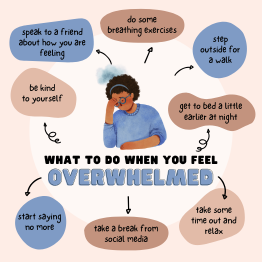Currency
INR - Indian Rupee
- AFN - Afghan Afghani
- ALL - Albanian Lek
- DZD - Algerian Dinar
- AOA - Angolan Kwanza
- ARS - Argentine Peso
- AMD - Armenian Dram
- AWG - Aruban Florin
- AUD - Australian Dollar
- AZN - Azerbaijani Manat
- AZM - Azerbaijani Manat (1993–2006)
- BSD - Bahamian Dollar
- BHD - Bahraini Dinar
- BDT - Bangladeshi Taka
- BBD - Barbadian Dollar
- BYN - Belarusian Ruble
- BZD - Belize Dollar
- BMD - Bermudan Dollar
- BTN - Bhutanese Ngultrum
- BOB - Bolivian Boliviano
- BAM - Bosnia-Herzegovina Convertible Mark
- BWP - Botswanan Pula
- BRL - Brazilian Real
- GBP - British Pound
- BND - Brunei Dollar
- BGN - Bulgarian Lev
- BIF - Burundian Franc
- KHR - Cambodian Riel
- CAD - Canadian Dollar
- CVE - Cape Verdean Escudo
- KYD - Cayman Islands Dollar
- CLP - Chilean Peso
- CNY - Chinese Yuan
- COP - Colombian Peso
- KMF - Comorian Franc
- CDF - Congolese Franc
- CRC - Costa Rican Colón
- HRK - Croatian Kuna
- CUP - Cuban Peso
- CZK - Czech Koruna
- DKK - Danish Krone
- DJF - Djiboutian Franc
- DOP - Dominican Peso
- EGP - Egyptian Pound
- ETB - Ethiopian Birr
- EUR - Euro
- FJD - Fijian Dollar
- GMD - Gambian Dalasi
- GEK - Georgian Kupon Larit
- GEL - Georgian Lari
- GHS - Ghanaian Cedi
- GTQ - Guatemalan Quetzal
- GNF - Guinean Franc
- GYD - Guyanaese Dollar
- HTG - Haitian Gourde
- HNL - Honduran Lempira
- HKD - Hong Kong Dollar
- HUF - Hungarian Forint
- ISK - Icelandic Króna
- IDR - Indonesian Rupiah
- IRR - Iranian Rial
- IQD - Iraqi Dinar
- ILS - Israeli New Shekel
- JMD - Jamaican Dollar
- JPY - Japanese Yen
- JOD - Jordanian Dinar
- KZT - Kazakhstani Tenge
- KES - Kenyan Shilling
- KWD - Kuwaiti Dinar
- KGS - Kyrgystani Som
- LAK - Laotian Kip
- LBP - Lebanese Pound
- LSL - Lesotho Loti
- LRD - Liberian Dollar
- LYD - Libyan Dinar
- MOP - Macanese Pataca
- MKD - Macedonian Denar
- MGA - Malagasy Ariary
- MWK - Malawian Kwacha
- MYR - Malaysian Ringgit
- MVR - Maldivian Rufiyaa
- MRO - Mauritanian Ouguiya (1973–2017)
- MUR - Mauritian Rupee
- MXN - Mexican Peso
- MDL - Moldovan Leu
- MAD - Moroccan Dirham
- MZN - Mozambican Metical
- MMK - Myanmar Kyat
- NAD - Namibian Dollar
- NPR - Nepalese Rupee
- ANG - Netherlands Antillean Guilder
- NZD - New Zealand Dollar
- NIC - Nicaraguan Córdoba (1988–1991)
- NGN - Nigerian Naira
- NOK - Norwegian Krone
- OMR - Omani Rial
- PAB - Panamanian Balboa
- PGK - Papua New Guinean Kina
- PYG - Paraguayan Guarani
- PEN - Peruvian Sol
- PHP - Philippine Piso
- PLN - Polish Zloty
- QAR - Qatari Rial
- ROL - Romanian Leu (1952–2006)
- KRW - South Korean Won
- LKR - Sri Lankan Rupee
- CHF - Swiss Franc
- USD - US Dollar
- AED - United Arab Emirates Dirham





